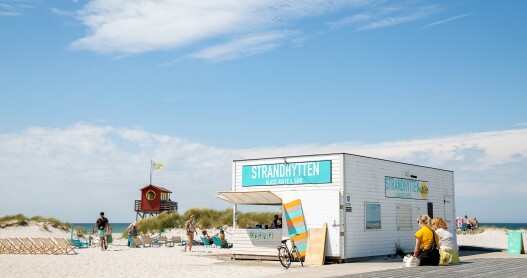Overview
When’s the best time to go to Sweden?
It’s extremely tough to get a Swede out of Sweden during the summer because the country comes alive with almost 24 hours a day of sunlight. The weather is temperate, with blue skies and low-hanging clouds and plenty of lush, undulating greenery. People spend their time island-hopping around various archipelagoes, hiking, swimming in bays, and retreating to summer cottages and cabins. Fall is for shellfish journeys in West Sweden, where you can trawl for lobster, crayfish, oysters, mussels, shrimps, and langoustines with professional fishermen. Winter brings with it opportunities to see the Northern Lights and to participate in outdoor activities such as husky sledding, snowmobiling, and skiing.
How to get around Sweden
Sweden’s main airports, in Stockholm and Gothenburg, are well-connected to the rest of Europe, and there are direct flights to the U.S. West Coast through Norwegian Airlines and Scandinavian Airlines (SAS). Chances are you’ll be arriving in Sweden via Stockholm Arlanda Airport, which is a 45-minute journey from the heart of the Swedish capital—or just 20 minutes if you take the Arlanda Express train. Budget airlines like EasyJet and Ryanair fly into Stockholm Skavsta Airport, which is 1.5 hours from the city. Elsewhere, airport buses such as Flygbussarna and Swebus tend to be the fastest way to get into town.
Sweden’s public transportation system is effective, efficient, and punctual. SJ operates long distance trains within the country and hopping on domestic flights (SAS and Norwegian) can often be cheaper and more time-efficient than cross-country trains. Most of the major cities have a subway or aboveground tram network, and there are also Baltic Sea ferries that shuttle travelers around islands to other countries within the Baltics and Nordics. Avoid taxis. They are the most expensive form of transport.
Food and drink to try in Sweden
Eating out in Sweden can quickly put a dent in your wallet. Locals save by looking for “Dagens Rätt” signs. This means the daily dish, and signifies one or more food options served at up to half regular price. Some of Sweden’s several Michelin-starred fine-dining restaurants have a bakficka (“back pocket”) sister restaurant that offers quality food at lower prices. West Sweden is known for having the best seafood due to its proximity to the clean, cold waters of the North Sea. Try “husmanskost” such as classic meatballs and pickled herring, which is Sweden’s version of traditional soul food. Participate in the Swedish social institution called “fika,” which means pausing several times daily to share coffee and sweet pastries like cinnamon buns with friends, colleagues, and family. There are special days dedicated to celebrating food: March 25 is Waffle Day, Shrove Tuesday is Semla Day, October 4 is Cinnamon Bun Day, and November 6 celebrates a creamy sponge cake called the King Gustavus Adolphus pastry. To stock up on liquor, you’ll need to visit one of the hundreds of government-run alcohol stores called Systembolaget.
Culture in Sweden
Sweden’s official capital, Stockholm, is built on 14 islands, each with its own personality and flair—from edgy Södermalm and glitzy Östermalm to old town Gamla Stan and Kungsholmen filled with young creatives. Its subway, T-bana, is the world’s longest art exhibition. Gothenburg is Stockholm’s nicer cousin, with a more laid-back feel despite being a port city. It has a noticeable hipster culture, and is framed by Sweden’s largest amusement park, Liseberg. Gothenburg is also Sweden’s culinary capital, with great emphasis placed on seafood, and is home to the largest fish market in Sweden. Culturally diverse Malmö is just a 35-minute train ride over the Öresund Bridge from Copenhagen, Denmark. Trace Sweden’s Viking and medieval history every summer on the island of Gotland. Umeå was the official European Capital of Culture in 2014. In Northern Sweden, Luleå is the gateway to Swedish Lapland, and Jokkmokk and Kiruna give you access to indigenous Sámi culture. For your best chances to see the Northern Lights, head to Sweden’s northernmost town, Abisko.
Valborg is a festival celebrating the arrival of spring with bonfires, vigils, and revelry around the country. You’ll find the blue-and-yellow Swedish flags flown all around towns on National Day, June 6. Midsummer, celebrated every year in late June, remains Sweden’s most iconic cultural event. Also in summer is the three-day Way Out West Music Festival in Gothenburg. Stockholm Film Festival takes place in fall, and in winter, Swedish Lapland celebrates an ice festival as well as the 410-year-old indigenous Sámi market in Jokkmokk. Other key events in winter include Gothenburg Film Festival and Sonar music, creativity, and technology festival in Stockholm. There are several iconic Christmas markets in various cities and towns, and Stockholm hosts the prestigious Nobel Prize awards and dinner every December.
Practical Information
- Most locals speak English, so you can get away with knowing only “hej” (hello) and “tack” (thanks) in Swedish.
- Many stores open around 9 or 10 a.m. and close between 5 and 6 p.m. On weekends they shut even earlier—and on Sundays they may not open at all—so plan your shopping accordingly.
- Many businesses operate on a queuing system using a number dispenser, so be on the lookout for these when entering a store.
- Sweden is an almost cashless society—everyone uses credit cards, though you should save a few coins for public toilets.
- The country is very environmentally conscious—from organic restaurants and cafes to recycling habits and ubiquitous biking culture—so be cognizant of this when using public spaces.
- If you’re pushing a stroller, you get to ride public buses for free.- Tipping is not required for services rendered.
- Sweden uses the 230 volt Europlug—type C and F.
- Sweden’s currency is the krona.
Local Resources
Guide Editor
Stephen Whitlock
Lola Akinmade Åkerström is a Stockholm-based award-winning writer and photographer whose publication credits include National Geographic Traveler (US & UK), BBC, CNN, Fodors, AFAR, Slate, New York Magazine, amongst others.








